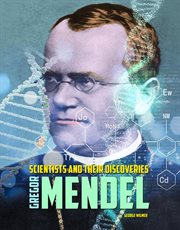Details
PUBLISHED
Made available through hoopla
DESCRIPTION
1 online resource
ISBN/ISSN
LANGUAGE
NOTES
During the nineteenth century, an Austrian friar named Gregor Mendel discovered that invisible factors, now called genes, determined the traits of an organism. Mendel found that certain traits passed down from parents were either dominant or recessive, and that patterns of trait inheritance could be reliably predicted. His work was little noticed until the early twentieth century, when other scientists, working independently, replicated his work. Mendel's life and accomplishments are detailed in this book. Each title in this series includes color photos throughout, and back matter including: an index and further reading lists for books and internet resources. Key Icons appear throughout the books in this series in an effort to encourage library readers to build knowledge, gain awareness, explore possibilities and expand their viewpoints through our content rich non-fiction books. Key Icons in this series are as follows: Words to Understand are shown at the front of each chapter with definitions. These words are set in boldfaced type in that chapter, so that readers are able to reference back to the definitions--building their vocabulary and enhancing their reading comprehension. Sidebars are highlighted graphics with content rich material within that allows readers to build knowledge and broaden their perspectives by weaving together additional information to provide realistic and holistic perspectives. Text-Dependent Questions are placed at the end of each chapter. They challenge the reader's comprehension of the chapter they have just read, while sending the reader back to the text for more careful attention to the evidence presented there. Research Projects are provided at the end of each chapter as well and provide readers with suggestions for projects that encourage deeper research and analysis. And a Series Glossary of Key Terms is included in the back matter containing terminology used throughout the series. Words found here broaden the reader's knowledge and understanding of terms used in this field
Mode of access: World Wide Web







